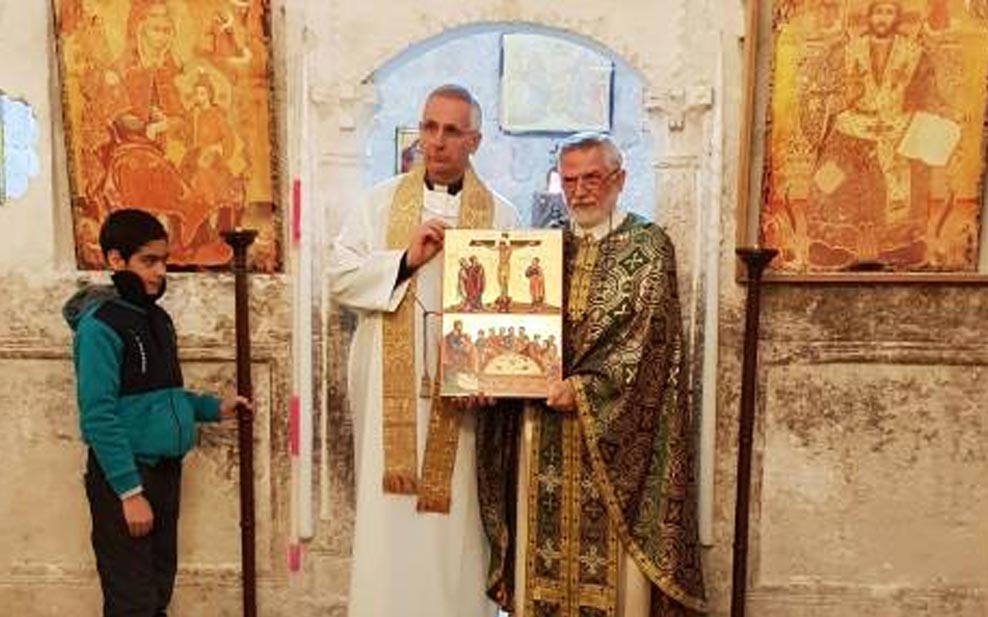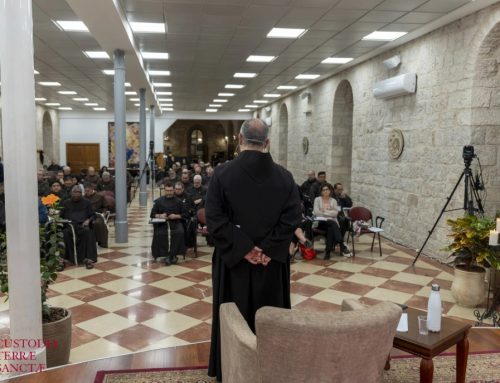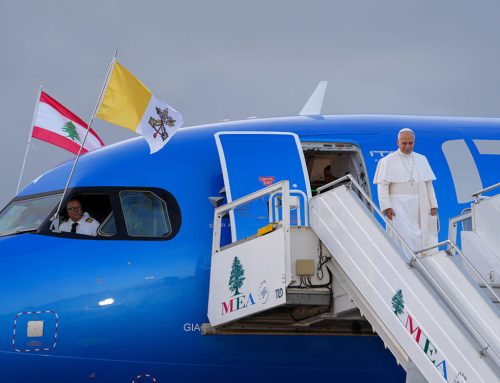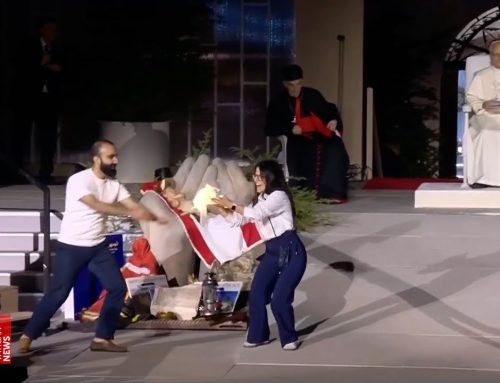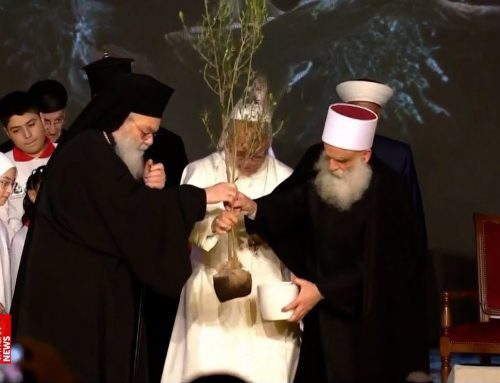Maalula – A copy of the icon of the Mysterious Supper – stolen from the shrine of St. Sergius and Bacchus in Maalula in 2014 when the Syrian village was occupied by al-Nusra jihadists – has been relocated to the ancient altar. The initiative to have a faithful copy of the icon painted and brought back to Maalula was inspired and brought to completion thanks to the collaboration that involved the NGO Perigeo, the Zaccaria Institute of the Barnabite Fathers of Milan and the University Center for the international solidarity (CESI) of the Catholic University of the Sacred Heart. The icon – symbol, explain the architects of the initiative in a statement sent to Agenzia Fides, “returns to reunite the Syrian Christian community, to testify that the violence of terrorism can only strengthen the identity of those who believe in peaceful coexistence”.
During their visit to Syria, the leaders of the institutions involved in the initiative, also delivered a reproduction of Our Lady of Providence, donated by the Barnabite Fathers to Mar Ignatios Aphrem II, Patriarch of the Syriac Orthodox Church, along with some contributions for initiatives and projects to support groups of young people in Damascus, Maalula and Aleppo. The delegation was also able to visit the city of Homs, and also made contact to launch a series of activities in favor of the Syrian people, “which calls for recognition and attention” in a delicate phase, characterized by the need to support the reconstruction and national reconciliation after the devastating years of the conflict.
Maalula, 55 km northeast of Damascus, known worldwide for being one of the places where Aramaic is still spoken, the language of Jesus, houses both the monastery of Saint Tekla – home to a Greek Orthodox female monastic community – and the sanctuary dedicated to Saints Sergius and Bacchus, that belongs to the Greek-Melchite Catholic Church.
Between September 2013 and March 2014, the rock village of Maalula was occupied by jihadist militias, in one of the most intense phases of the Syrian conflict.
After the reconquest of the village by the Syrian government army, the images and descriptions disseminated by government sources and also by international news agencies documented the devastation suffered by the Christian places of worship during the months of occupation by the jihadist militias. In particular, serious damage was inflicted on the Greek-Melchite shrine, where the church had been devastated, religious objects, images and sacred books had been damaged, and both the icons kept in the sacristy and the bells had disappeared, along with the cross that surmounted the dome of the convent.
The sanctuary of Mar Sarkis (Saint Sergius), was founded at the end of the fifth century and is dedicated to the saints Sergius and Bacchus, Roman soldiers martyred for their faith under the Emperor Galerius. (250-311 d.C.). Hotel Safir is on the hill above the sanctuary, a hotel that dominated the village and had been chosen as the headquarters of the rebel militias.
Before being devastated by the civil war, there were 5,000 Syrians living in the rock village of Maalula, most of them Christians (Greek-Catholics and Greek Orthodox).
In the original icon of the Mysterious Supper (of Syro-Palestinian workmanship – as well as in its reproduction, the double representation of the Crucifixion and of the Last Supper is represented: the upper part represents the crucified Christ with the holy Virgin and the apostle John, the beloved disciple, while the lower half shows a representation of the Last Supper in detail: Jesus, instead of being at the center of the scene, is on the left side of the table, in the position of “he who serves”. And the table surrounded by Jesus and the apostles is represented with a semicircular form, similar to that of the central altar of the church (which is actually an ancient pagan altar adapted to the cult of the Christian mysteries in the first centuries followed by the birth, death and resurrection of Christ.
Source: Agenzia Fides

